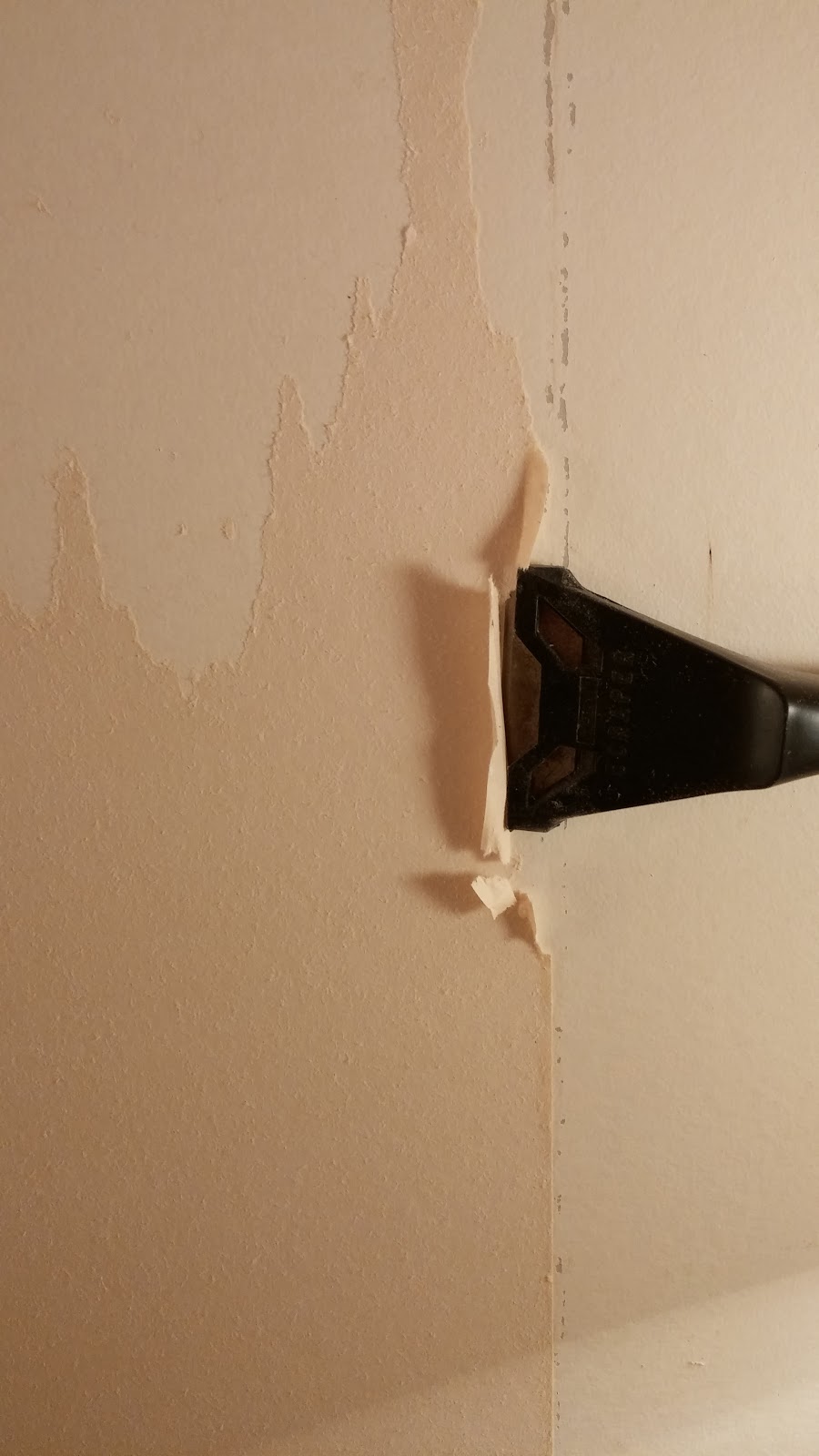 |
Step 1. Remove switch plates and lighting fixtures.
Pull off the outer layer of paper in large sheets. |
When it was time to remove the paper in a small bathroom, I dreaded the idea of spending time in the constrained space with a chemical stripper applied on the walls, so I researched alternative, non-toxic options. Although using vinegar rather than a stripping solution, takes some elbow grease, avoiding exposure to chemical fumes for hours while peeling paper, seemed a reasonable trade-off.
 |
| Step 2. Spray the next layer with a warm water and vinegar mix (ratio 4:1), and immediately scraped it off with a razor scraper. |
 |
| Step 3. Respray sections that do not scrape easily, and continued scraping. |
 |
| Step 4. Remove the last remnants of glue with a rag dipped in a bucket of warm water to reveal the original smooth surface. |
 |
| Step 5. Touch-up scratched areas with taping compound if necessary, and re-paper, or avoid future paper removal, and paint. Replace switches and fixtures. |



